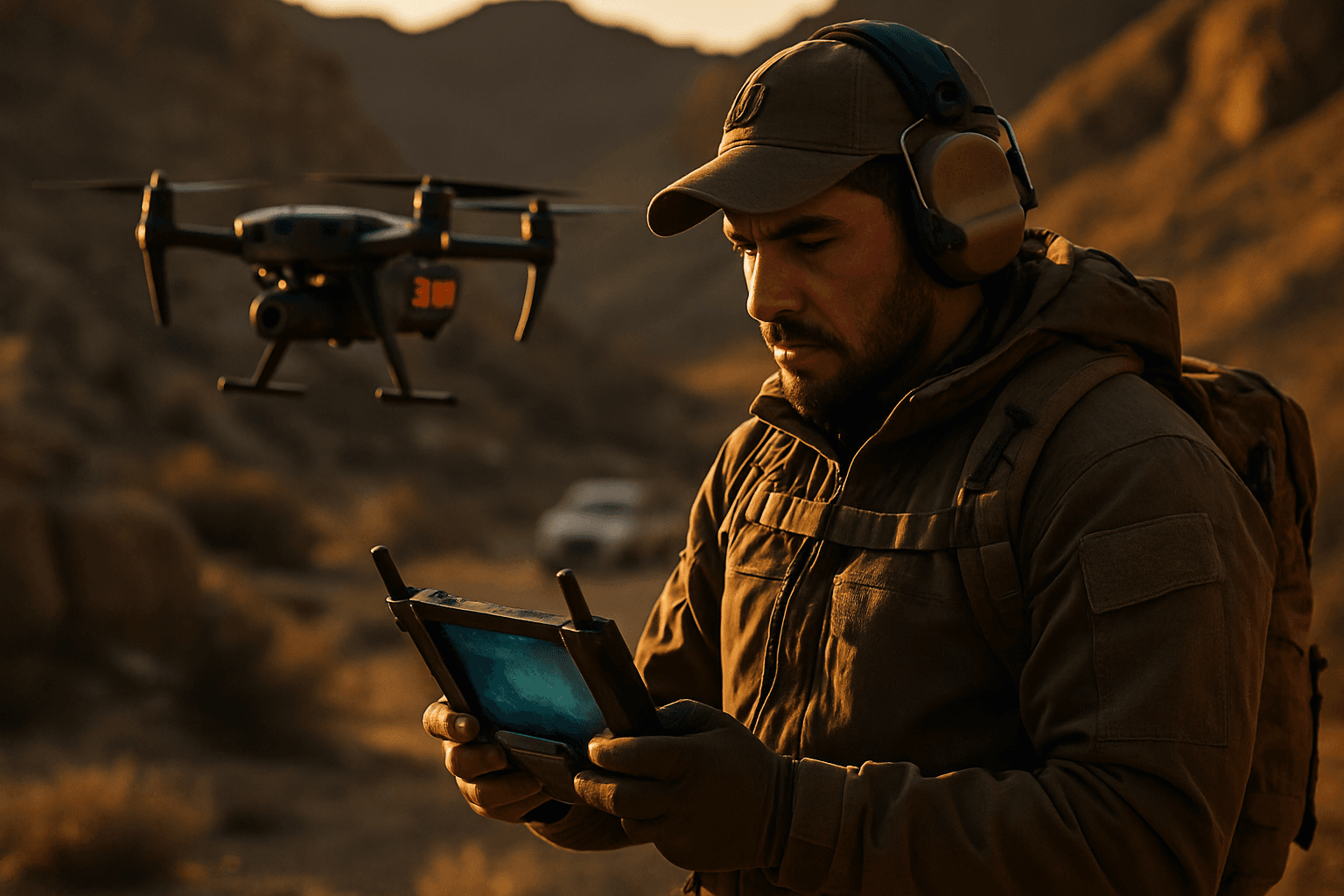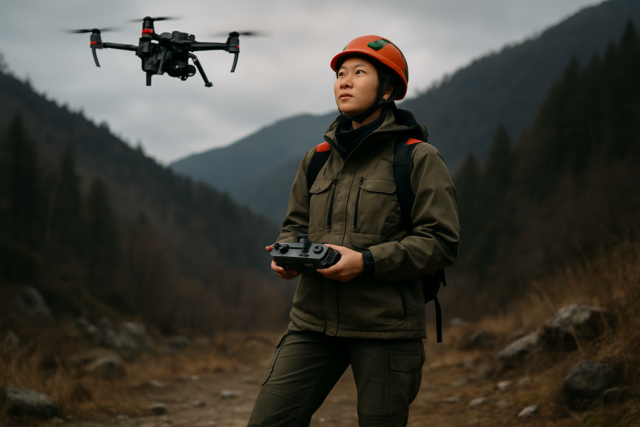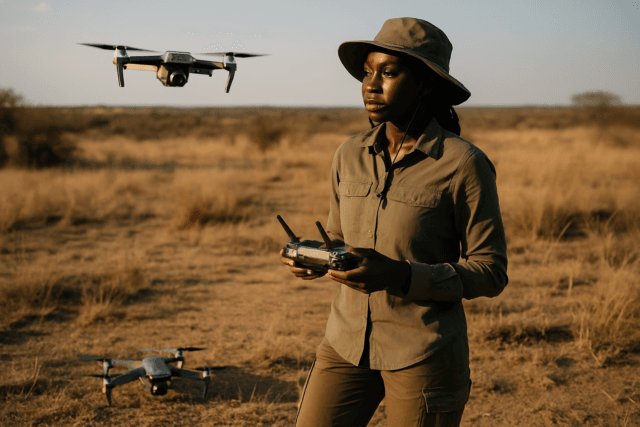Drones have revolutionized Search and Rescue (SAR) operations, offering unparalleled speed, versatility, and access to challenging terrains. However, the effectiveness of these Unmanned Aerial Systems (UAS) hinges on the operator’s situational awareness (SA)—the ability to perceive, comprehend, and project the status of their environment and mission. Without robust training in SA, the transformative potential of drones in SAR can be significantly diminished, potentially leading to errors and compromised mission outcomes.
Understanding Situational Awareness in Drone SAR Operations
Situational awareness, as defined by Mica Endsley, involves three levels: perceiving environmental information, comprehending its meaning, and projecting future states. In the context of drone SAR, this translates to an operator’s continuous understanding of:
- The Drone’s Status: Battery life, GPS signal, payload functionality, and overall health.
- The Environment: Weather conditions, terrain, obstacles (e.g., power lines, trees, buildings), and dynamic factors like wind patterns, especially in dense forests or urban areas.
- The Mission Objective: Location of missing persons, identified hazards, and the overall progress of the search.
- Team Coordination: Communication with ground teams, other aerial assets, and incident commanders.
The ability of drones to provide real-time aerial views and data from advanced sensors like thermal imaging cameras is invaluable for SAR operations, significantly improving SA for rescue teams.
Challenges to Situational Awareness in SAR Drone Operations
Despite their advantages, several factors can challenge a drone operator’s SA during SAR missions:
- Cognitive Overload: The vast amount of data generated by multi-sensor drones can be overwhelming.
- Limited Bandwidth and Connectivity: In remote or disaster-stricken areas, poor or absent communication can hinder real-time data transmission and command reception.
- Environmental Obstacles: Dense foliage, adverse weather conditions (e.g., heavy rain, strong winds, extreme temperatures), and complex urban landscapes can obscure visual contact and affect drone stability and performance.
- Human Factors: Inexperience, lack of sleep, stress, and a reliance on automation without proper understanding can lead to errors.
- Display Design Limitations: The interface through which operators receive information may not always be optimal for maintaining SA.
- Autonomous System Challenges: While autonomy reduces cognitive burden, operators still need to understand the drone’s behavior and the degree to which it can be trusted.
Key Components of Effective Situational Awareness Training
Robust training programs are essential to equip drone operators with the skills needed to maintain high SA in high-stakes SAR environments.
1. Comprehensive Pre-Flight Planning and Risk Assessment
Effective SAR drone operations begin long before takeoff. Training should emphasize meticulous planning:
- Mission Planning: Learning to create detailed and effective mission plans, including search patterns (e.g., sector search, line search, parallel search), optimal flight paths, and contingency strategies. This includes understanding lost person behavior to refine search areas.
- Environmental Assessment: Thoroughly evaluating weather, terrain, potential hazards (e.g., power lines, restricted airspace), and suitable take-off/landing sites.
- Equipment Checks: Conducting comprehensive physical inspections of the drone, propellers, landing gear, batteries, and payloads (cameras, sensors), ensuring firmware and software are up-to-date, and calibrating systems. Battery health assessment is critical for maximizing flight time.
- Legal and Ethical Considerations: Familiarity with airspace regulations, privacy laws, and humanitarian principles.
- Checklist Documentation: Utilizing systematic pre-flight checklists to ensure methodical preparation and provide a valuable record.
2. In-Flight Monitoring and Data Interpretation
During flight, operators must continuously monitor multiple streams of information:
- Drone Telemetry: Real-time data on altitude, speed, GPS accuracy, battery status, and system diagnostics.
- Payload Management: Proficiency in operating and interpreting data from advanced sensors, particularly thermal imaging cameras for detecting heat signatures in low visibility or at night. Operators must be able to distinguish objects from the background and classify them.
- Dynamic Environmental Awareness: Adapting flight plans in real-time to changing weather, unexpected obstacles, or new information.
- Visual Observation: While relying on camera feeds, maintaining visual contact with the drone (or employing a visual observer) is a best practice to identify hazards the pilot might miss.
3. Effective Communication and Teamwork
SAR operations are inherently collaborative. Training must focus on:
- Clear Communication Protocols: Establishing and adhering to standardized communication procedures with ground teams, incident commanders, and other aerial assets. Drones often provide real-time video streaming to ground teams, enabling quick decision-making.
- Designated Roles: Clearly defining roles, such as pilot, visual observer, and payload operator, to prevent cognitive overload and ensure all aspects of the mission are covered.
- Information Sharing: Efficiently relaying critical findings, such as the location of a missing person or hazardous conditions, to support coordinated response efforts.
4. Scenario-Based Learning and Simulation
Practical, hands-on experience in realistic scenarios is paramount for developing robust SA:
- Multi-Disciplinary Training Scenarios: Practicing drone deployment in various SAR situations, including structure fires, brush fires, swift-water rescue, hazardous material handling, and searches in diverse terrains (dense forests, urban landscapes, mountainous regions).
- Simulation Software: Utilizing advanced drone simulators like Zephyr, SRIZFLY, Gazebo, or AirSim, which offer realistic flight physics, customizable environments, and a wide array of training modules. Simulators provide a safe, cost-effective, and risk-free environment to practice complex maneuvers and emergency procedures, reducing operational risks and training costs.
- Real-World Drills: Complementing simulations with hands-on field exercises under the guidance of qualified instructors, allowing operators to apply their skills in real-life conditions.
- Emergency Response Training: Specific training on how to handle inflight emergencies, lost links, or fly-aways.
5. Post-Flight Debriefing and Continuous Improvement
Learning doesn’t end when the drone lands:
- Structured Debriefs: Conducting thorough post-flight debriefings to evaluate mission performance, identify what went well, what went wrong, and what could be done differently. This includes reviewing planned versus actual flight paths and decisions made.
- Feedback and Analysis: Providing tailored feedback to operators, assigning proficiency levels, and using insights to refine training programs.
- Logbook Maintenance: Keeping detailed logbooks of flight hours, maintenance, and any issues encountered to track drone health and operator performance.
- Continuous Training: SAR drone operations are dynamic; regular, ongoing training sessions are essential to hone skills, adapt to new technologies, and ensure preparedness for demanding situations.
Conclusion
The integration of drones into Search and Rescue operations has undeniably enhanced response capabilities, but the true measure of their success lies in the proficiency and situational awareness of their human operators. By implementing comprehensive training programs that prioritize meticulous pre-flight planning, continuous in-flight monitoring and data interpretation, effective communication, realistic scenario-based learning (including advanced simulation), and structured post-flight debriefings, SAR organizations can ensure their drone operators are not only skilled pilots but also highly aware decision-makers ready to face the complexities of life-saving missions. Investing in these best practices is not just about flying drones; it’s about maximizing the potential for successful outcomes when every second counts.





